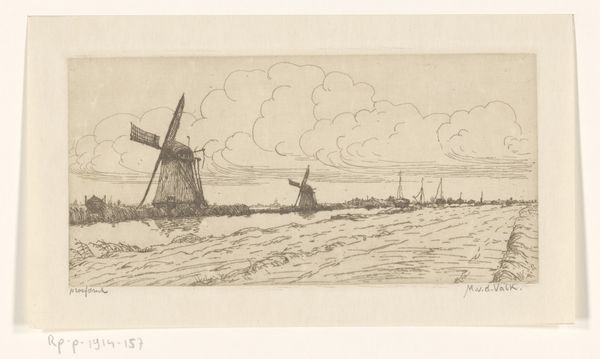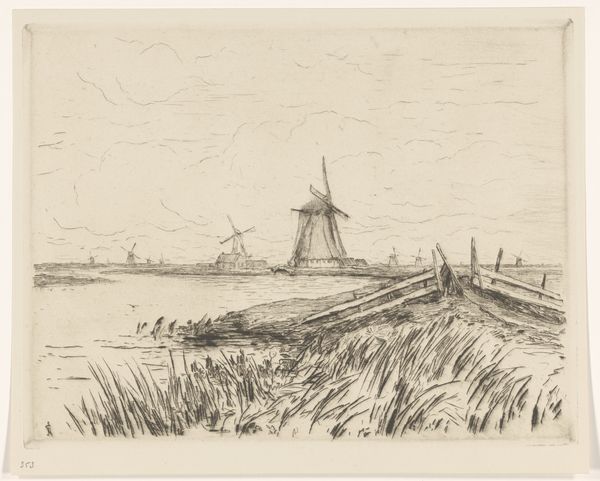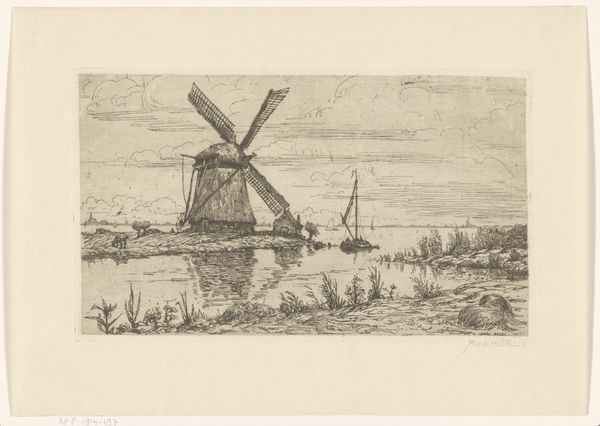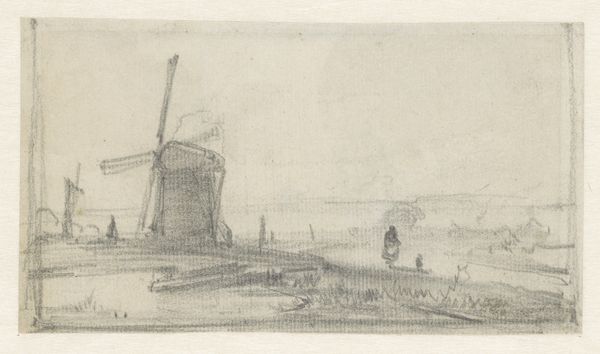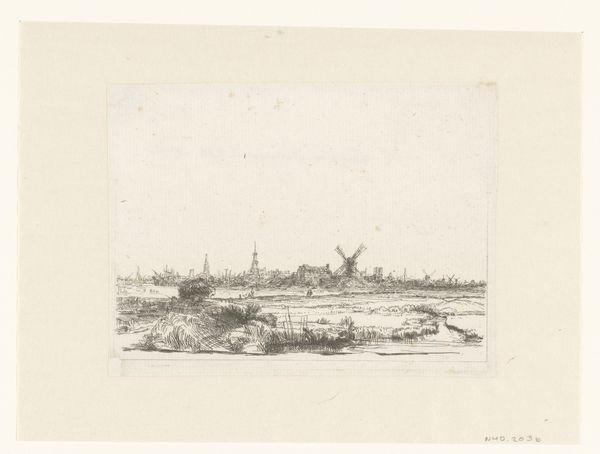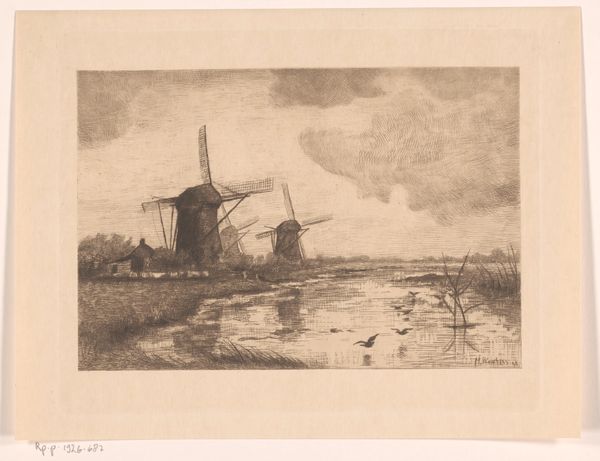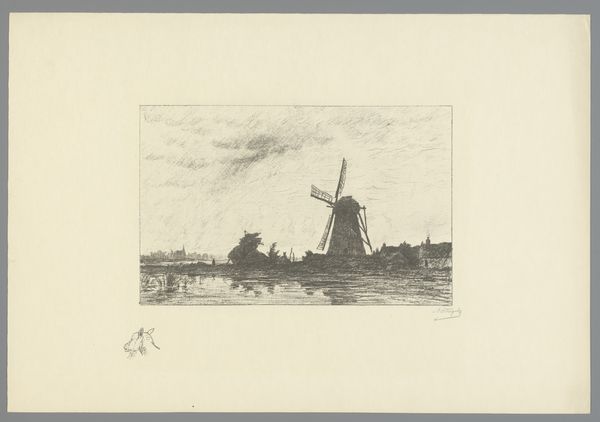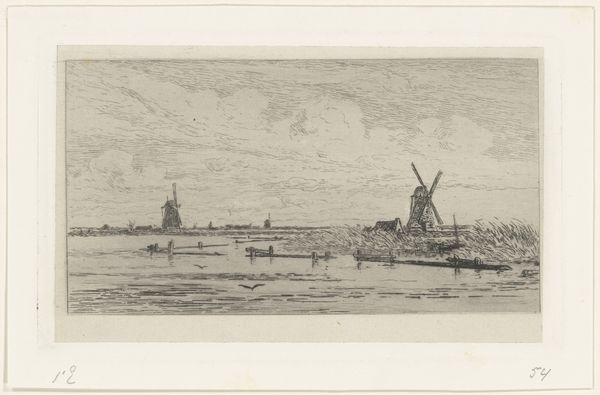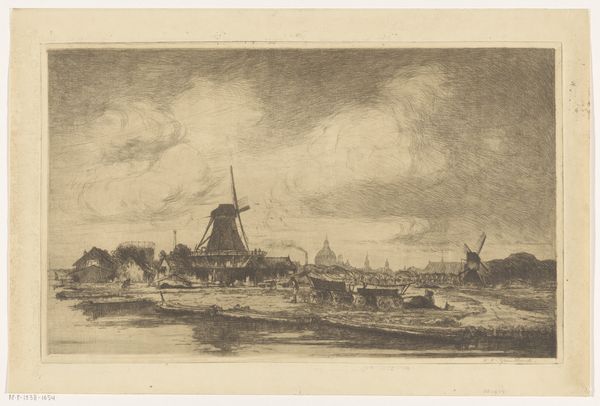
#
landscape illustration sketch
#
aged paper
#
light pencil work
#
pencil sketch
#
old engraving style
#
etching
#
personal sketchbook
#
pen-ink sketch
#
pencil work
#
watercolour illustration
Dimensions: height 106 mm, width 212 mm
Copyright: Rijks Museum: Open Domain
Curator: Let’s turn our attention to Maurits van der Valk's "Polderland met zeilboot en molen," which we believe was made sometime between 1867 and 1922. It resides here at the Rijksmuseum. Editor: It has the hazy feeling of memory, doesn’t it? Everything is rendered in soft greys; a dreamy tableau of water, sky, and the defining structures of Dutch landscape. Curator: Absolutely. Looking closer, the emphasis on line work and hatching speaks to a deliberate printmaking process. The artist probably spent a fair bit of time considering the various depths and surfaces they wished to translate using etching techniques. What emerges in the details like the windmills and rigging of the boats suggests that van der Valk’s access to materials—pen, ink, etching plate—allowed for repeated and exact reproductions. Editor: Notice how the windmill dominates the composition. It’s a recurring symbol in Dutch art, but also deeply significant. These mills are not simply picturesque; they're tied to land reclamation, an essential task in the Netherlands. The sails, catching the wind, become a powerful symbol of ingenuity, but also of constant struggle against the waters. It resonates with ideas of national identity as one constructed on hard labor and innovation. Curator: It certainly appears to underscore this notion. There is something fascinating in understanding that beyond simply aesthetics, images become signifiers that transmit cultural beliefs, social structures and modes of production. In what we call "fine art" versus practical labor. The etching process itself is industrial in nature, enabling the circulation of this particular representation of Dutch identity. Editor: Yes, this interplay of artistic symbolism and industrious necessity is precisely what makes this sketch so resonant. By capturing this tension visually, it preserves it through time, sparking conversations about identity, progress, and cultural values that stretch far beyond the artwork's physical borders. It makes one ponder the symbolism and how this humble landscape still moves us. Curator: Indeed. This closer look has prompted a fresh reflection on what "Polderland met zeilboot en molen" really communicates about artistic methods and the meaning we assign to cultural identity. Editor: And the subtle ways these symbols and processes shape not only our understanding of the art, but the values held by societies throughout time.
Comments
No comments
Be the first to comment and join the conversation on the ultimate creative platform.

